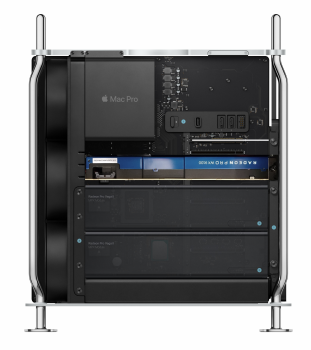Here's the real riddle you will need to solve before installing four (4!) AMD GPUs in a new cMP 7,1....
How can an AMD (Sapphire RX Vega 64 Liquid Cooled) GPU with an official TDP of 345W casually draw more than 500W when running the Windows 7 "Windows Experience Index" testing benchmark INSIDE a Parallels Virtual Machine?
Skeptics will say intermittent (or 'spike') power draw exceeding the rated/stated TDP of 345W by a full 50% is novel and a bit surprising but ultimately quite acceptable.
To those people I say...... "Hold my beer!"
When I ran the "Windows Experience Index" test and took 10 screenshots over a 60 second period - I was highly ALARMED by the SUSTAINED power draw during the graphics evaluation segment.
View attachment 910829
Screenshot 1: The lowest value was 570W
View attachment 910831
Screenshot 2: The highest value was 675W (..BOOM!)
View attachment 910832
Screenshot 3: The random value at 30 seconds was 601W
CONCLUSION.. modern AMD GPUs provide/publish unreliable 'TPD' information in their product datasheets.
Expressed another way, [and in my experience] modern AMD GPUs draw power from the PSU as though the TDP parameter was left empty (null) in the BIOS before the boards were shipped.
Extremely uneven power draw (and the damage done) is a key theme that senior contributors on this website have described (in particular
@tsialex ) in an effort to elevate technical awareness of this issue. I can personally confirm that these problems are NOT exaggerated - they are genuinely concerning and as you can see in my screenshots - even the most prodigious contributors to this forum may have underestimated the problem.
Circling back..... just imagine installing four (4!) AMD GPUs in a new cMP 7,1.... OUCH!
NOTE: My GPU test was 'fueled' by 2 PSUs - 1 internal (8-pins) and 1 external (8-pins)











